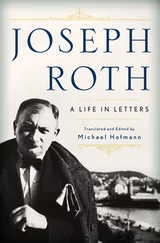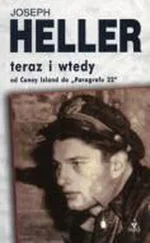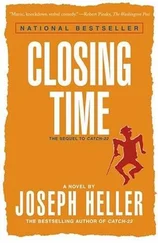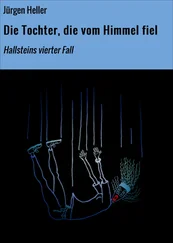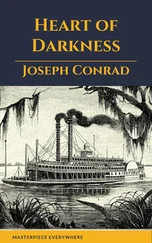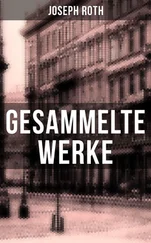“It’s absolutely insane. Your conscience will never let you rest.”
“God bless it.” Yossarian laughed. “I wouldn’t want to live without strong misgivings. Right, Chaplain?”
“I’m going to punch Captain Black right in the nose the next time I see him,” gloried the chaplain, throwing two left jabs in the air and then a clumsy haymaker. “Just like that.”
“What about the disgrace?” demanded Major Danby.
“What disgrace? I’m more in disgrace now.” Yossarian tied a hard knot in the second shoelace and sprang to his feet. “Well, Danby, I’m ready. What do you say? Will you keep your mouth shut and let me catch a ride?”
Major Danby regarded Yossarian in silence, with a strange, sad smile. He had stopped sweating and seemed absolutely calm. “What would you do if I did try to stop you?” he asked with rueful mockery. “Beat me up?”
Yossarian reacted to the question with hurt surprise. “No, of course not. Why do you say that?”
“I will beat you up,” boasted the chaplain, dancing up very close to Major Danby and shadowboxing. “You and Captain Black, and maybe even Corporal Whitcomb. Wouldn’t it be wonderful if I found I didn’t have to be afraid of Corporal Whitcomb any more?”
“Are you going to stop me?” Yossarian asked Major Danby, and gazed at him steadily.
Major Danby skipped away from the chaplain and hesitated a moment longer. “No, of course not!” he blurted out, and suddenly was waving both arms toward the door in a gesture of exuberant urgency. “Of course I won’t stop you. Go, for God sakes, and hurry! Do you need any money?”
“I have some money.”
“Well, here’s some more.” With fervent, excited enthusiasm, Major Danby pressed a thick wad of Italian currency upon Yossarian and clasped his hand in both his own, as much to still his own trembling fingers as to give encouragement to Yossarian. “It must be nice to be in Sweden now,” he observed yearningly. “The girls are so sweet. And the people are so advanced.”
“Goodbye, Yossarian,” the chaplain called. “And good luck. I’ll stay here and persevere, and we’ll meet again when the fighting stops.”
“So long, Chaplain. Thanks, Danby.”
“How do you feel, Yossarian?”
“Fine. No, I’m very frightened.”
“That’s good,” said Major Danby. “It proves you’re still alive. It won’t be fun.”
Yossarian started out. “Yes it will.”
“I mean it, Yossarian. You’ll have to keep on your toes every minute of every day. They’ll bend heaven and earth to catch you.”
“I’ll keep on my toes every minute.”
“You’ll have to jump.”
“I’ll jump.”
“Jump!” Major Danby cried.
Yossarian jumped. Nately’s whore was hiding just outside the door. The knife came down, missing him by inches, and he took off.
The End
Appendix Joseph Heller’s Preface to the 1994 Edition of Catch-22
In 1961 , The New York Times was a newspaper with eight columns. And on November 11 of that year, one day after the official publication date of Catch-22, the page with the book review carried an unusual advertisement that ran from top to bottom and was five columns wide. To the eye the effect was stupendous. The book review that day, of a work by somebody else, was squeezed aside to the fold of the page, as were the crossword puzzle and all else. The ad had this caption: WHAT’s THE CATCH? And displayed at the top in silhouette was the comic cartoon of a uniformed figure in flight, glancing off to the side at some unspecified danger with an expression of panic.
It was an announcement ad for Catch-22. Interwoven with the text were mentions of praise from twenty-one individuals and groups of some public standing, most connected to literature and the publishing world, who had received the novel before publication and had already reviewed it or commented about it favorably.
Within days after publication, there was a review in The Nation by Nelson Algren (a client of my own literary agent, who had urged him to read it), who wrote of Catch-22 that it “was the best novel to come out of anywhere in years”. And there was a review by Studs Terkel in a Chicago daily newspaper that recommended it about as highly.
So much attention to the work at publication was in large part the result of the industrious zeal and appreciation of my literary agent, Candida Donadio, and my editor, Robert Gottlieb, and I embrace the opportunity afforded now to dedicate this new edition to both of them, as colleagues and allies with talents that were of immeasurable value.
The work was not reviewed in the Times on publication. However, it was reviewed in the Herald Tribune by Maurice Dolbier, and Mr. Dolbier said of it: “A wild, moving, shocking, hilarious, raging, exhilarating, giant roller-coaster of a book.”
That the reviewer for the Herald Tribune came to review at all this war novel by someone unknown was almost entirely the product of coincidence. S. J. Perelman, much better known and the subject of an interview by Mr. Dolbier, was publishing his own book at just about that time. His publisher was Simon amp; Schuster, mine too, and the editor in charge of his work there was also the same, Bob Gottlieb. In answer to a question put to him by Dolbier about his own reading, Mr. Perelman replied that he was very much engrossed in a novel pressed upon him by his editor, a novel called Catch-22. Returning to his office, Mr. Dolbier later confessed to me, he found the book already in a pile with others he had decided he would not have time to study as prospects to write about. Had it not been for Gottlieb, there would have been no Perelman, and had it not been for Perelman, there would have been no review by Dolbier.
And had it not been for Dolbier, there might not have been the Times. Two weeks afterward, and probably only because of Mr. Dolbier, the book was described with approbation in the daily Times by the reviewer Orville Prescott, who predicted it would not be forgotten by those who could take it and called it: “A dazzling performance that will outrage nearly as many readers as it delights.”
The rest, one might say is history, but it is a history easily misconstrued. The novel won no prizes and was not on any bestseller list.
And, as Mr. Prescott foresaw, for just about every good report, there seemed to appear one that was negative. Looking back at this novel after twenty-five years, John Aldridge, to my mind the most perceptive and persistent commentator of American literature over the decades, lauded Robert Brustein for his superbly intelligent review in The New Republic, which contained “essential arguments that much of the later criticism has done little to improve on”, and Mr. Aldridge recognised that many in the early audience of Catch-22 “liked the book for just the reasons that caused others to hate it”.
The disparagements were frequently venomous. In the Sunday Times, in a notice in back so slender that the only people seeing it were those awaiting it, the reviewer (a novelist who also by chance was a client of my own agent, Candida) decided that the “novel gasps for want of craft and sensibility”, “is repetitious and monotonous”, “fails”, “is an emotional hodgepodge”, and was no novel; and in the esteemed The New Yorker, the reviewer, a staff writer who normally writes about jazz, compared the book unfavorably with a novel of similar setting by Mitchell Goodman and decided that Catch-22 “doesn’t even seem to have been written; instead, it gives the impression of having been shouted onto paper”, “what remains is a debris of sour jokes”, and that in the end Heller “wallows in his own laughter and finally drowns in it”. (I am tempted now to drown in laughter as I jot this down.)
Читать дальше

